#sifaka lemur
Text

when i was a child i vividly remember being OBSESSED with these funky dudes, the sifaka lemur, i even had the hop they did down pat
it was strange
15 notes
·
View notes
Text


3 notes
·
View notes
Text

Coquerel’s sifaka (Propithecus coquereli) in Madagascar. Razafitsalama plans to accelerate his community-based fire management programme to protect lemur habitat in a country that the UN said has experienced the world’s first climate change-induced famine
Photograph: Travis Steffens/2023 Whitley awards

Madagascar’s mongoose lemur (Eulemur mongoz)
#travis steffens#photographer#whitley awards#coquerel's sifaka#propithecus coquereli#madagascar#lemur#animal#mammal#wildlife#conservation#nature#madagascar's mongoose lemur#eulemur mongoz
62 notes
·
View notes
Text
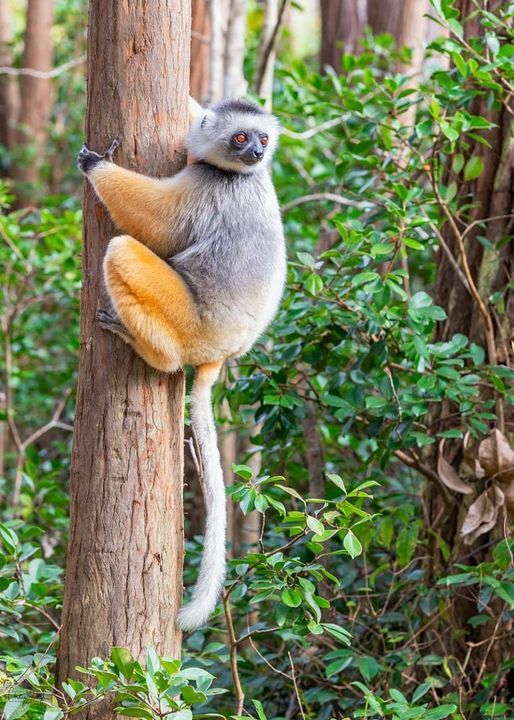
Diademed Sifaka (Propithecus diadema), family Indriidae, Madagascar
ENDANGERED.
photograph by Christian Sanchez
103 notes
·
View notes
Text

A Coquerel's sifaka (Propithecus coquereli) leaps from a branch in Madagascar, Africa
by Laurence Green
#coquerel's sifaka#sifakas#lemurs#Propithecus coquereli#propithecus#indriidae#strepsirrhini#primates#mammalia#chordata#wildlife: madagascar#wildlife: africa#prosimians
61 notes
·
View notes
Text
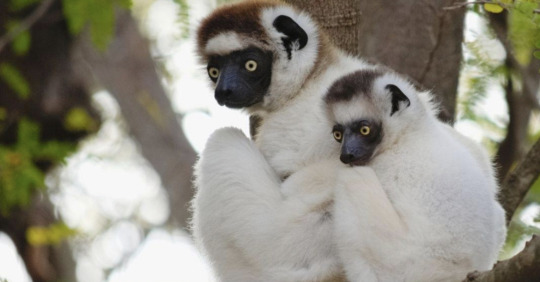
Verreaux’s Sifaka
Verreaux’s Sifaka is the only lemur to have partially webbed feet. Native to Madagascar. Critically endangered.
Source: New England Primate Conservancy
34 notes
·
View notes
Text
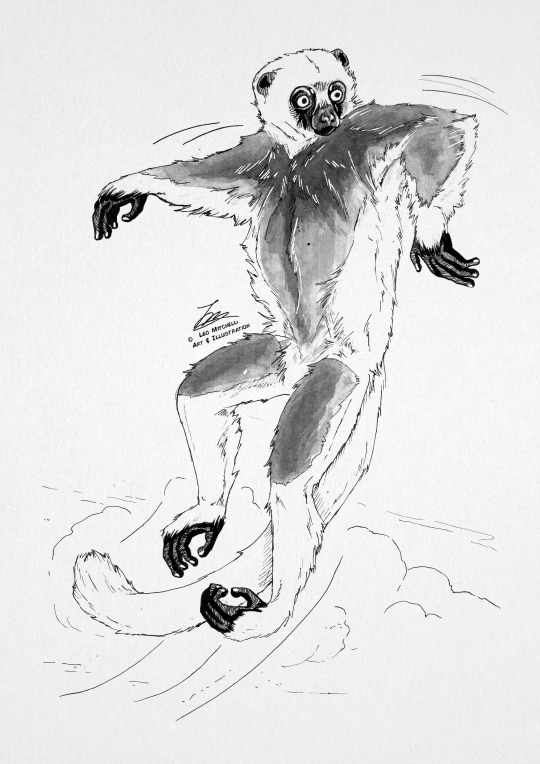
Inktober 2023 no.9 - “Bounce” 🤾🏼♂️
Between Madagascar, the ps2 game and Zaboomafoo, the Coquererl’s Sifaka is the face of pure nostalgia.
#inktober#inktober 2023#inktober2023#Coquererl’s Sifaka#Sifaka#lemur#Zaboomafoo#kratt brothers#jovian the lemur
25 notes
·
View notes
Text
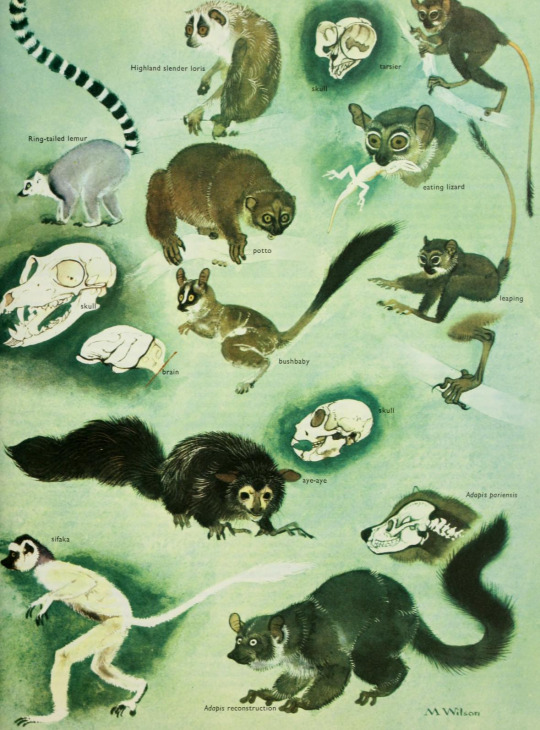
Encyclopedia of the Animal World, vol. 16. Published by Elsevier International Projects. Illustration by Maurice Wilson. 1972.
#primates#lemurs#ring tailed lemurs#sifakas#tarsiers#aye ayes#bush babies#prehistoric#prehistoric mammals#adapis#Maurice Wilson
264 notes
·
View notes
Text

Verreaux’s sifaka (Propithecus verreauxi)
These sifakas are very specialised for living in trees, eating mostly leaves and being capable of leaping ten metres from tree to tree. They also live in a variety of wet or dry forest habitats. Sifakas are so specialised for climbing they can’t walk on all fours like a ring-tailed lemur, nor can they stride bipedally like humans; instead, they move on the ground using an odd bipedal bounding motion.
#markhors-menagerie#primates#basal primates#lemurs#animal facts#fun facts#animals#biology#sifaka#verreaux’s sifaka
53 notes
·
View notes
Text


Lemurs! Blue-eyed black lemurs and a Golden crowned sifaka. Drew them for the World Lemur Festival that takes place every October but I missed it this year! :( I have promised myself I will draw at least one before 2022 is done. An Aye-aye probably.
#mouseart#lemur#lemurs#sclater's lemur#blue-eyed black lemur#golden crowned sifaka#illustration#digital art
125 notes
·
View notes
Text
Madagascar, Lemurs, OneHealth.......a Masters? 🏝️🐒🔭🎓(U9)
Hey friends, its been a while and I’m glad you’re here!
This weeks’ prompt encourages us to share something about nature that gets us excited and ooooooooooooooooh am I excited! Like I’ve mentioned before, I’m a 4th year zoology student which 1) means I know a lot of cool animal stuff (ask me questions!), and 2) it’s almost time for me to graduate!
So today I’d like to talk about my current Masters application and the really cool OneHealth conservation research I have done (and hope to do again) in Madagascar!

Over the summer I got the opportunity to take the One Health Approach to Conservation Field school where we were taught zoological, ecological, and anthropological approaches to conservation issues in Madagascar’s rainforest and unique dry deciduous forest within Ankarafantsika National Park (Picture a rainforest but take away the rain, the biggest animal is the same kind of lemur as Zoboomafoo, and also the soil is like sand!!). While I won’t go into too much detail about most of the field work we practiced, like tree identification, phrenology, and size measurements, participant-observation sessions in tree-planting, rice harvesting, and a local village classroom, and of course-tent living and consistent rice and beans eating, I willllllllllll go into detail about the lemurs, cause oh so much do I love those little guys.
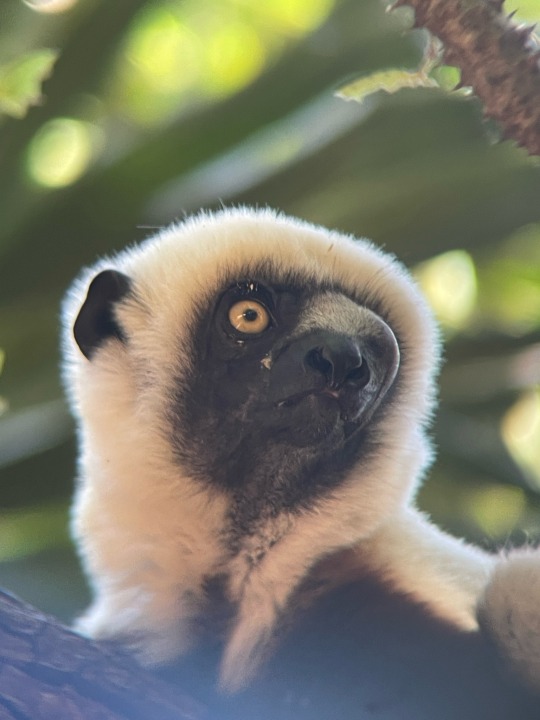



(1. Male with eye tumor/injury, 2. me with two mothers (if you look close you can see 2 baby heads!), 3. me taking leaf samples to make a dry-season Tree ID sketch, 4. my luxurious living quarters for the month.)
Our instructions were to do both focal and scan sampling, but my absolute favourite part of the trip was following the lemur groups and trying to identify the specific individuals while they were either chilling in our camp or being extremely chaotic in the forest.
During these observations, not once but twice did I witness 2 separate groups have lemurs literally try to kill an individual from the other group... and so when asking about this to my professor, the general conclusion we came to after he told me he’s never seen such violence despite coming to the park for years, was that the increased forest fragmentation (deforestation making the forest into sections rather than one continuous space) might be forcing groups that should be far apart into sharing the same spaces, causing fights for space, food, etc.
This species of lemur (Coquerel’s sifaka) is critically endangered and is a huge sense of pride for the indigenous people of Madagascar. Many of the parks residents follow taboos that forbid lemur hunting and consumption to protect these creatures. Unfortunately, its possible that either the past or current farming practices of some of them are negatively affecting lemurs, potentially without realizing. Not only does this become an anthropological issue, but if true, is a logistical problem best answered with knowledge of the lemurs behaviour, spatial and abundance knowledge on the plants used for food and shelter by both lemurs and people, and of course interviewing, participating in, and potentially educating and being educated by the residents to get a proper understanding of how to tackle this problem.
And so that’s the general gist of what I’ll be diving deeper into for my Masters, wish me luck!
[My friends video of one of the violent interactions (I know it looks like they are hugging but they have giant teeth with a strong bite force, are the size of toddlers, and it didn't give up until it thought the other was practically dead), the lemur that didn't run away was left with a bleeding head and injured arm but we think she survived!]
#Madagascar#Ankarafantsika National Park#OneHealth#Zoology#Ecology#Anthropology#Sifaka#Coquerels sifaka#lemurs#field work#conservation#envs 3000#science communication#behaviour research
11 notes
·
View notes
Text


5 notes
·
View notes
Photo

Propithèque de von der Decken
#lemurien#lemur#madagascar#our great national parks#propithecus deckenii#von der decken's sifaka#Propithèque de von der Decken#gif
281 notes
·
View notes
Text

Verreaux's sifaka mom and baby (Digital art from 2022)
I love the way these lemur leap through the trees! And it's pretty impressive how they can hold onto spiny tree trunks without poking themselves.
5 notes
·
View notes
Text

A Coquerel's sifaka (Propithecus coquereli) pulls fruit from trees in Madagascar
by Laurence Green
#coquerel's sifaka#sifakas#lemurs#propithecus coquereli#propithecus#indriidae#Strepsirrhini#primates#mammalia#chordata#wildlife: madagascar#wildlife: africa
63 notes
·
View notes
Text

Verreaux’s Sifaka
Source: shutterstock.com
Verreaux’s Sifaka is the only lemur to have slightly webbed feet. Native to Madagascar. Critically endangered.
38 notes
·
View notes